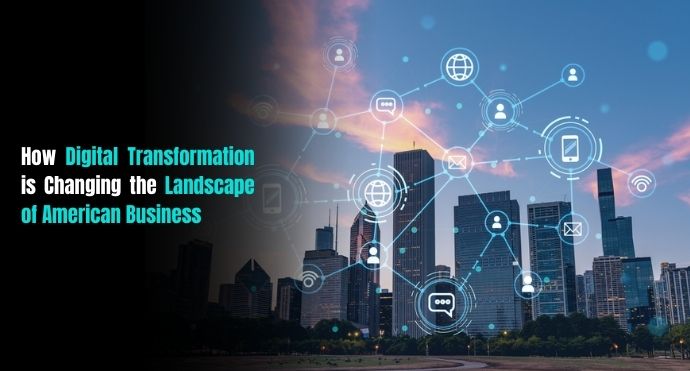In an age marked by rapid technological advancements, the digital transformation has emerged as a driving force behind the evolution of American businesses. This paradigm shift is reshaping industries, altering consumer behaviors, and revolutionizing the way organizations operate. From traditional brick-and-mortar establishments to cutting-edge startups, the impact of digital transformation is undeniable. In this article, we’ll delve into how digital transformation is changing the landscape of American business, backed by data and real-life examples.
1. Enhanced Customer Experiences
Digital transformation is placing customers at the center of business strategies, offering personalized experiences that cater to their evolving demands. According to a study by Accenture, 91% of consumers are more likely to shop with brands that recognize, remember, and provide them with relevant offers and recommendations. This shift is evident in the retail sector, where e-commerce giants like Amazon have transformed shopping into a seamless, data-driven experience. Moreover, companies are leveraging data analytics to anticipate customer needs, resulting in increased customer satisfaction and loyalty.
Example: Starbucks, a renowned coffeehouse chain, implemented a mobile app that allows customers to place orders, make payments, and earn rewards seamlessly. This digital initiative not only streamlined the purchasing process but also provided valuable insights into customer preferences.
2. Data-Driven Decision Making
The abundance of data generated by digital interactions empowers businesses to make informed decisions. Organizations are leveraging data analytics and machine learning to gain insights into market trends, customer behaviors, and operational efficiencies. According to a Forbes survey, 74% of businesses believe that data-driven decision-making has increased their revenue and profitability.
Example: Walmart, a retail giant, utilizes big data analytics to optimize inventory management and supply chain operations. By analyzing historical sales data and external factors like weather patterns, they can predict demand more accurately, reducing stockouts and overstock situations.
3. Agility and Innovation
Digital transformation is fostering agility and innovation, allowing businesses to adapt quickly to changing market conditions. Cloud computing, for instance, has enabled companies to scale operations seamlessly and experiment with new business models without substantial upfront investments. Startups are disrupting traditional industries by leveraging technology to offer innovative solutions.
Example: Airbnb, a pioneer in the sharing economy, revolutionized the hospitality industry by providing a platform for individuals to rent out their homes. This digital approach disrupted the traditional hotel model and introduced a new way of experiencing travel accommodations.
4. Remote Work and Collaboration
The COVID-19 pandemic accelerated the adoption of remote work and highlighted the importance of digital tools for collaboration. Businesses that embraced digital transformation prior to the pandemic were better equipped to continue operations seamlessly during lockdowns.
Example: Slack, a popular collaboration platform, saw a significant surge in users as remote work became the norm. The platform enabled teams to communicate, share files, and collaborate on projects from different locations.
5. Targeted Marketing and Personalization
Digital transformation has redefined marketing strategies, allowing businesses to tailor their messages to specific audiences. Through data analysis and artificial intelligence, companies can create hyper-targeted campaigns that resonate with consumers on a personal level.
Example: Coca-Cola’s “Share a Coke” campaign personalized soda bottles with popular names, encouraging customers to share their unique bottles on social media. This initiative led to increased engagement and brand awareness.
Conclusion:
Digital transformation is more than just a technological upgrade; it’s a fundamental shift in how businesses operate and interact with their customers. From customer experiences to decision-making processes, agility to marketing strategies, its impact is pervasive. American businesses that embrace this transformation are poised to thrive in an era defined by innovation, adaptability, and customer-centricity. As we move forward, staying abreast of the latest technological trends and their applications will be crucial for sustaining growth in the ever-evolving landscape of American business.



